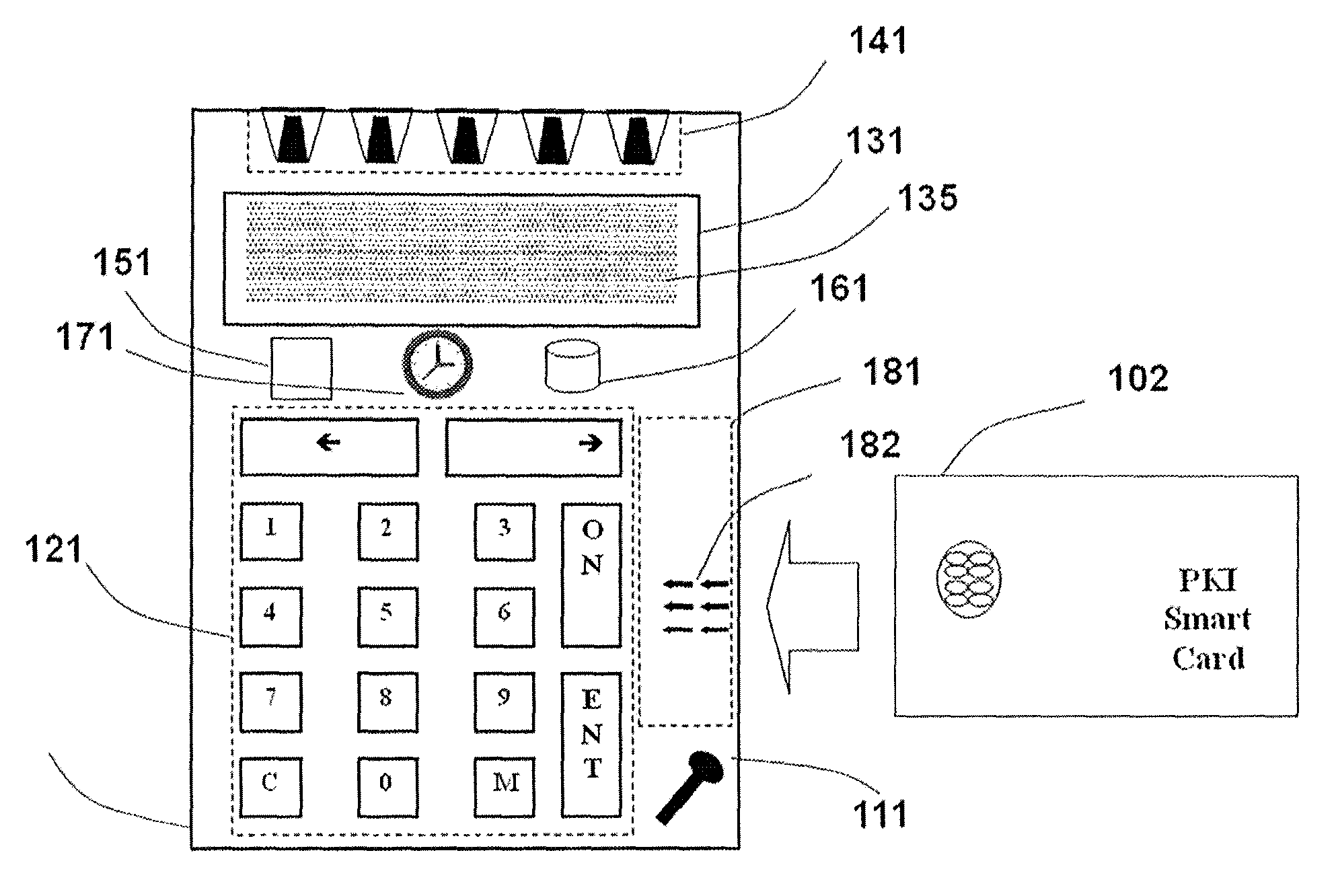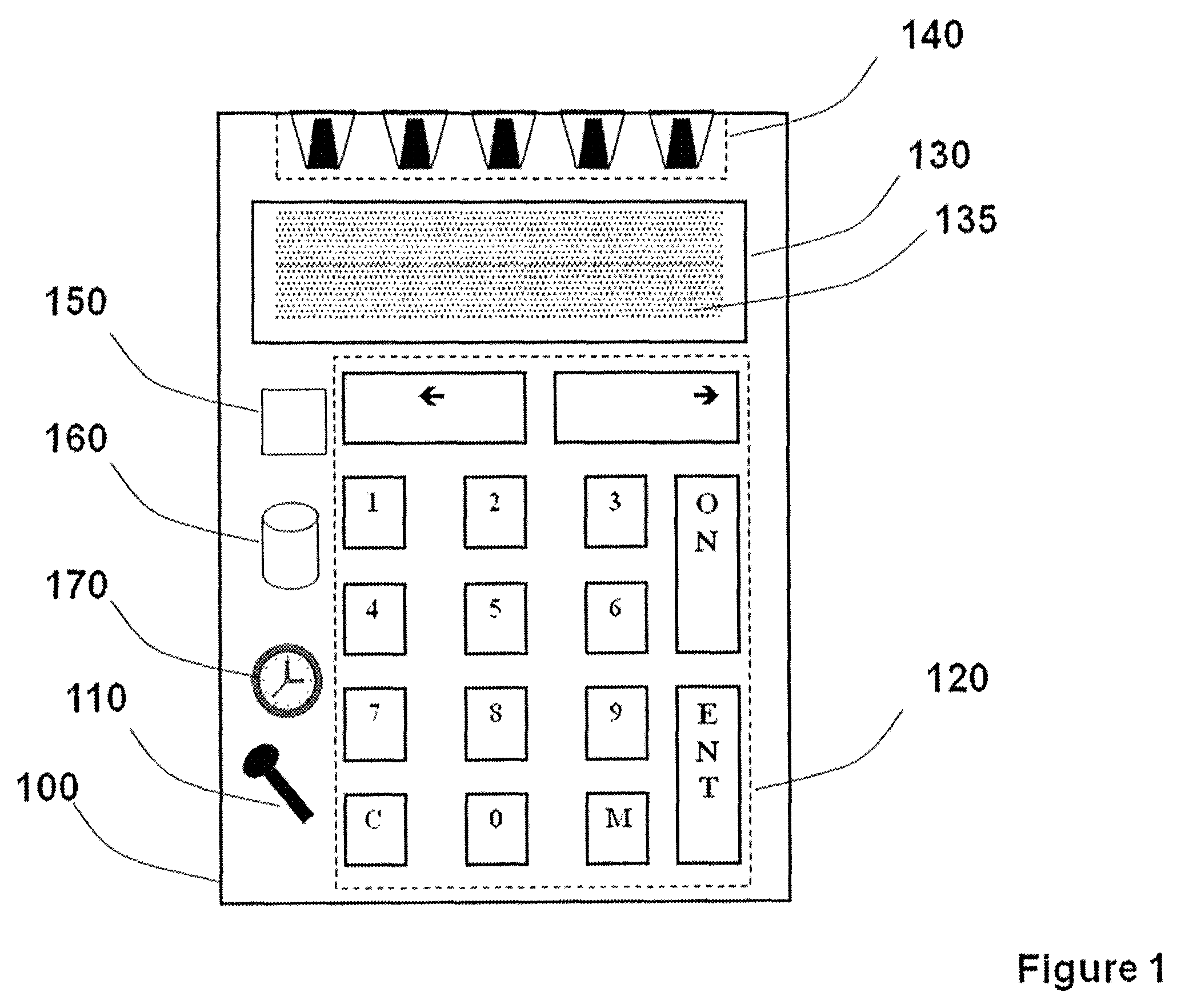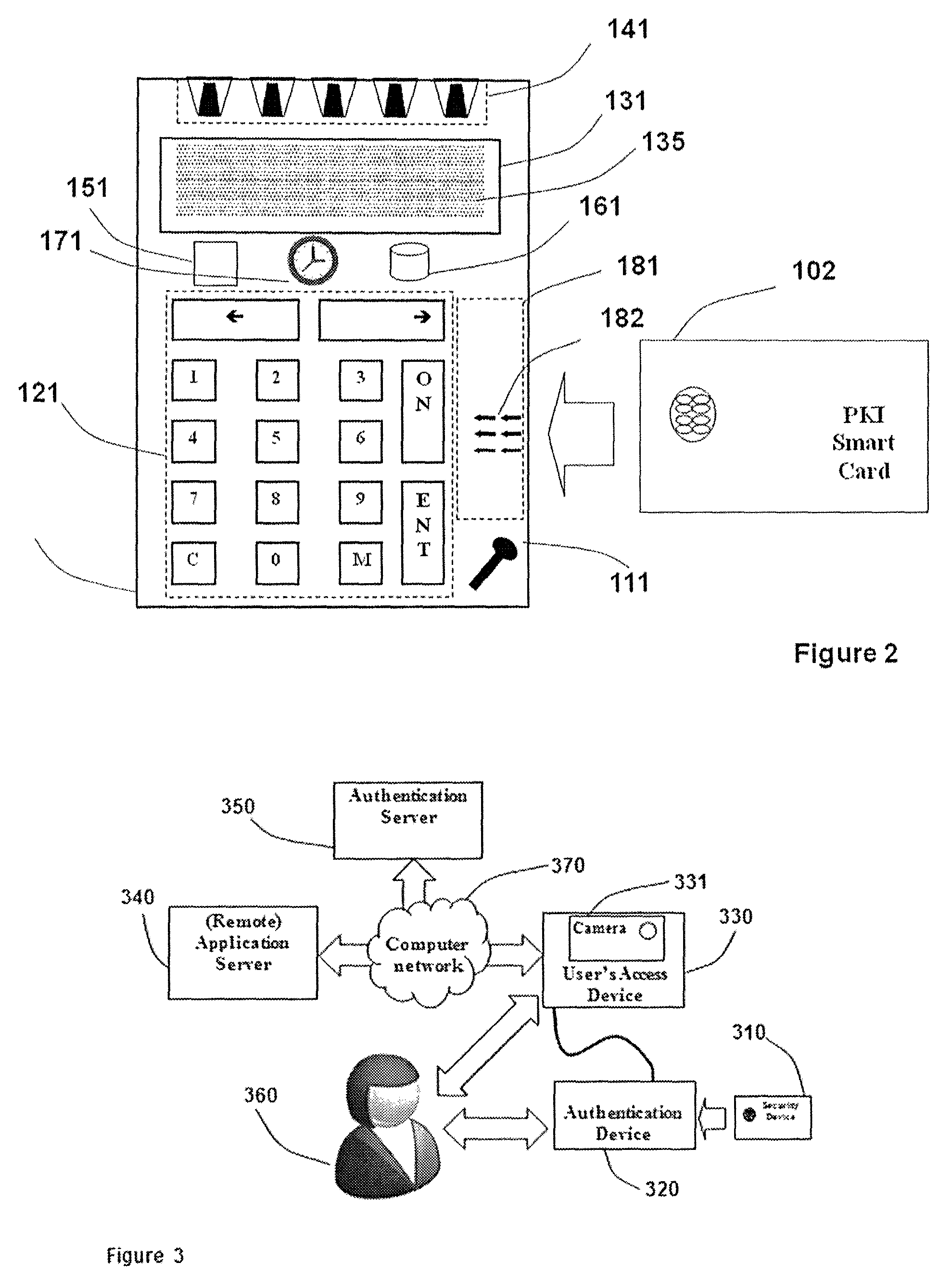Strong authentication token with visual output of PKI signatures
a technology of strong authentication and visual output, applied in the field of strong authentication tokens, can solve the problems of insufficient static passwords, inability to consider general purpose devices to have a trustworthy user interface, and need more advanced security technology
- Summary
- Abstract
- Description
- Claims
- Application Information
AI Technical Summary
Benefits of technology
Problems solved by technology
Method used
Image
Examples
Embodiment Construction
[0145]Some implementations of the present invention are discussed below. While specific implementations are discussed, it should be understood that this is done for illustration purposes only. A person skilled in the relevant art will recognize that other components and configurations may be used without parting from the spirit and scope of the invention.
[0146]FIG. 1 illustrates an authentication device (100) according to an aspect of the invention. The device comprises one or more data processing components (150), one or more memory components (160) and a display (130). Optionally, the device may comprise a real-time clock (170), an acoustic input interface (110), a manual user input interface (120), and / or an optical input interface (140). The device (100) is adapted to generate security values based on asymmetric cryptography and to encode these security values in one or more images (135) and to display these images on the display (130).
[0147]The one or more data processing compo...
PUM
 Login to View More
Login to View More Abstract
Description
Claims
Application Information
 Login to View More
Login to View More - R&D
- Intellectual Property
- Life Sciences
- Materials
- Tech Scout
- Unparalleled Data Quality
- Higher Quality Content
- 60% Fewer Hallucinations
Browse by: Latest US Patents, China's latest patents, Technical Efficacy Thesaurus, Application Domain, Technology Topic, Popular Technical Reports.
© 2025 PatSnap. All rights reserved.Legal|Privacy policy|Modern Slavery Act Transparency Statement|Sitemap|About US| Contact US: help@patsnap.com



